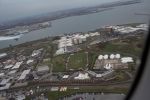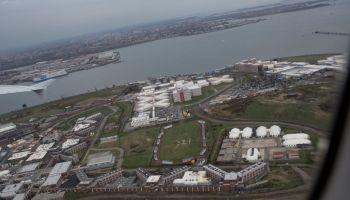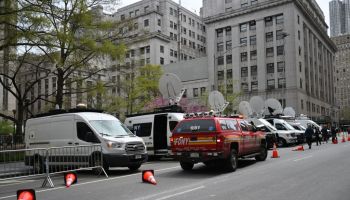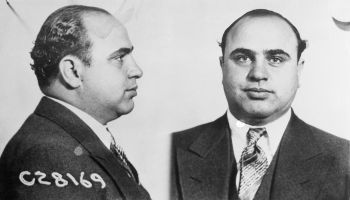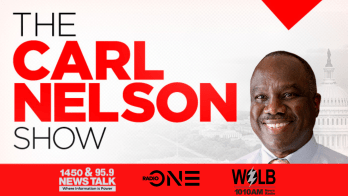VIA WASHINGTON POST:
Remaking Tysons Corner into the second city of Washington will take a lot more than a new Metro line and a downtown of tightly clustered buildings designed for walking. It will take almost $15 billion in new roads and public transportation.
That jaw-dropping sum, a preliminary estimate released by Fairfax County planners this week, will be crucial to a redevelopment that envisions more than twice the 44 million square feet of offices, malls and housing now in Tysons — a commercial and residential hub intended to draw thousands of new workers who will leave their cars at home. But planners fear thousands more will drive and overwhelm the area’s already clogged road network.
“Anytime you’re looking at capital costs with a B, it gets your attention,” said Walter L. Alcorn, the county Planning Commission chairman. “They raise some budget issues that go way beyond just land use.”
Wednesday’s long-awaited estimate of transportation costs has renewed concern over whether a prime economic engine of Virginia that’s poised to become even bigger will receive new money from Richmond, where officials are projecting a deficit in state transportation funding of $100 billion over the next two decades.
The numbers also have prompted some proponents of dense development in Tysons to argue that if the county pushes too many costly road improvements and makes room for more cars, the vision could unravel.
The costs include $2.6 billion allocated for the first leg of the Silver Line, now under construction to Wiehle Avenue in Reston. Seven billion dollars for roads, bus service and two additional rail lines would not be spent until after 2030. And it’s assumed that landowners who stand to profit from dense development near the four Tysons train stations will donate property for much of a planned grid of narrow, city-like streets.
But that still leaves billions of dollars for roads, sidewalks, interchanges and new bus routes over the next 20 years that have no source of funding and are crucial to the success of what Tysons is planned to become.
Between next year and 2030, planners say, a new lane should be built on the outer loop of the Capital Beltway between Route 7 and Interstate 66. Express bus service should be added to connect Tysons with other parts of the county. Traffic-choked roads through Tysons, including routes 7 and 123 and other smaller byways, should be widened to anywhere from four to eight lanes. Overpasses and ramps should be built along the Dulles Toll Road, the route of the second leg of the 23-mile rail line to Dulles International Airport. That stretch, estimated at $2.6 billion, has not received federal funding, although landowners in the area are pursuing a tax district to cover some of the cost.
After 2030, Tysons will need more buses, streets, garages for cars parking at the Metrorail stations and a streetcar to ferry workers, shoppers and residents throughout the area. Metro’s Orange Line should extend from Vienna along I-66 to Centreville, and another rail line should carry workers in Tysons along a north-south route, the study concludes.
Moving forward
Next month, the county’s planning staff is expected to suggest which roads should be widened and improved first and whether developers will need to wait for those investments to happen before they can build.
Landowners have been waiting years for rules that will allow more density, especially near the train stations. A county-appointed panel has said that unless high-rises clustered with as many offices, stores and condominiums or apartments as possible are built soon, landowners will not provide the roads and other amenities the new city needs. The planning staff has said it prefers a more suburban mix at first: Unless roads and transit are in place, planners say, the roads in Tysons will be overwhelmed.
Some of the projects — bus rapid transit routes or an Orange Line extension, for example — will serve other corners of the county. “But it’s important for them to be there for Tysons to function,” Planning Director Jim Zook said.
Critics say some of the projects are unrealistic and might thwart the effort to rebuild Tysons.
“Some of them seem absurd,” said William D. Lecos, a former president of the county’s chamber of commerce who serves on the task force. “Does anybody really believe we’re going to go back and add another lane to the Beltway after the HOT lanes are built?” he said, referring to the high-occupancy toll project under construction. Land for the right-of-way would require the state to take hundreds of homes, he said.
Paying for change
For funding, Fairfax officials say, they will look to the Obama administration, which is committed to subsidizing growth projects in urban areas. They hold out little hope from the Virginia Department of Transportation, which this year slashed the county allocation for secondary roads to zero. Given the millions of dollars Northern Virginia has gotten for big projects such as the HOT lanes and new Woodrow Wilson Bridge, “More state funding is pretty much politically doomed,” said Kathy Ichter, the county’s chief of transportation planning.
Other potential sources include a bigger tax on commercial and industrial landowners, although the proceeds would be limited; the county is 1.5 cents short of a state-mandated cap of 12.5 cents per $100 of assessed value. Another strategy used liberally in the District, tax-increment financing, would use future property taxes to pay off bonds. But the practice would be controversial in fiscally conservative Fairfax, Alcorn said. Landowners in Tysons also could be asked to tax themselves, much the way they are paying for a portion of the Silver Line.
The transportation costs might seem huge, but county leaders say the alternatives could be even more expensive to taxpayers: more suburban sprawl, more pollution, more driving, more gas.
“If you look at Fairfax 40 years ago, we had a population of 500,000,” said Board of Supervisors Chairman Sharon Bulova (D). “Now we are approaching 1.2 million people. The question is how do you accommodate that growth in a way that doesn’t exacerbate the problems created by the way we’ve grown until now?”
- Sudan: Entertainment, Food, Languages, Places To Visit + More
- Algeria: Entertainment, Food, Languages, Places To Visit + More
- Tunisia: Entertainment, Food, Languages, Places To Visit + More
- South Sudan: Entertainment, Food, Languages, Places To Visit + More
- Morocco: Entertainment, Food, Languages, Places To Visit + More
